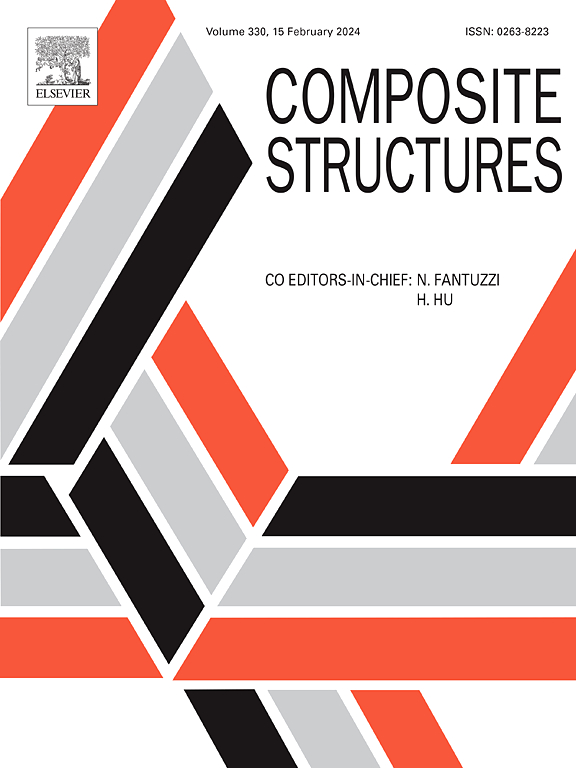Deterministic and stochastic analysis of a three phase piezoelectric composite using the coupled PIM-VAM based homogenization framework
IF 7.1
2区 材料科学
Q1 MATERIALS SCIENCE, COMPOSITES
引用次数: 0
Abstract
This paper presents a computational framework that integrates the Variational Asymptotic Method (VAM) with the Point Interpolation Method to evaluate the global and local field properties of inclusion-coated three-phase piezoelectric composites. Validated against the Mori–Tanaka method and the Uniform Micro-mechanical Approach, the framework demonstrates good agreement and is extended to assess the impact of increasing relative coating thickness on electromechanical performance. Results indicate significant improvements in coupled piezoelectric and dielectric properties with greater coating thickness, particularly when the fiber volume fraction exceeds 30%, in both the transverse and polarization directions. While the inclusion shape has a negligible effect along the poling axis, it induces noticeable variations in the transverse direction due to localized anisotropic coupling, especially for sharp-edged inclusion shapes. Although some enhancement is observed in the transverse direction, the electromechanical response remains primarily governed by polarization along the poling axis, which becomes more dominant at higher fiber volume fractions. Additionally, integrating VAM with a Stochastic Reduced Order Model enables microstructural uncertainty analysis, showing that higher fiber volume fractions significantly increase variance in stochastic response variables. A related study shows greater variance in the transverse direction for sharp-edged inclusions, while the longitudinal direction remains consistent across all inclusion shapes.
基于PIM-VAM耦合均匀化框架的三相压电复合材料确定性和随机分析
本文提出了一种结合变分渐近法(VAM)和点插值法的计算框架,用于评估包覆包覆的三相压电复合材料的全局和局部场特性。通过Mori-Tanaka方法和均匀微力学方法的验证,该框架显示出良好的一致性,并扩展到评估相对涂层厚度增加对机电性能的影响。结果表明,在横向和极化方向上,随着涂层厚度的增加,特别是当纤维体积分数超过30%时,耦合压电和介电性能都有显著改善。虽然包裹体形状沿极化轴的影响可以忽略不计,但由于局部各向异性耦合,它在横向上引起了明显的变化,特别是对于锋利边缘的包裹体形状。虽然在横向上观察到一些增强,但机电响应仍然主要由极化轴方向的极化控制,在更高的纤维体积分数下,极化变得更加主导。此外,将VAM与随机降阶模型相结合,可以进行微观结构的不确定性分析,结果表明,纤维体积分数越高,随机响应变量的方差就越大。一项相关研究表明,锋利边缘的包裹体在横向上的差异更大,而在所有包裹体形状中,纵向上保持一致。
本文章由计算机程序翻译,如有差异,请以英文原文为准。
求助全文
约1分钟内获得全文
求助全文
来源期刊

Composite Structures
工程技术-材料科学:复合
CiteScore
12.00
自引率
12.70%
发文量
1246
审稿时长
78 days
期刊介绍:
The past few decades have seen outstanding advances in the use of composite materials in structural applications. There can be little doubt that, within engineering circles, composites have revolutionised traditional design concepts and made possible an unparalleled range of new and exciting possibilities as viable materials for construction. Composite Structures, an International Journal, disseminates knowledge between users, manufacturers, designers and researchers involved in structures or structural components manufactured using composite materials.
The journal publishes papers which contribute to knowledge in the use of composite materials in engineering structures. Papers deal with design, research and development studies, experimental investigations, theoretical analysis and fabrication techniques relevant to the application of composites in load-bearing components for assemblies, ranging from individual components such as plates and shells to complete composite structures.
 求助内容:
求助内容: 应助结果提醒方式:
应助结果提醒方式:


